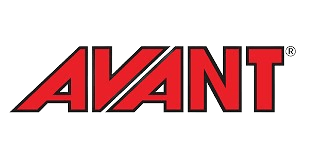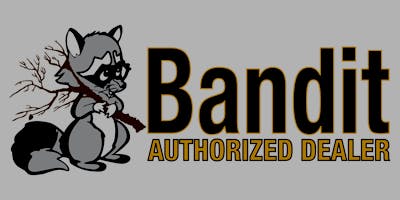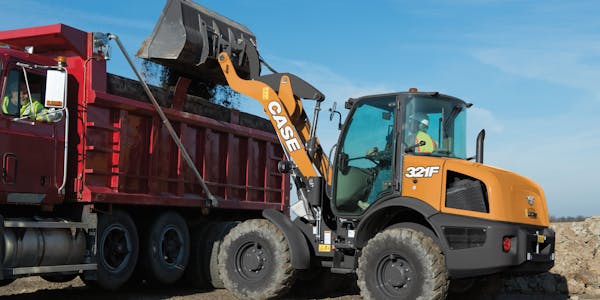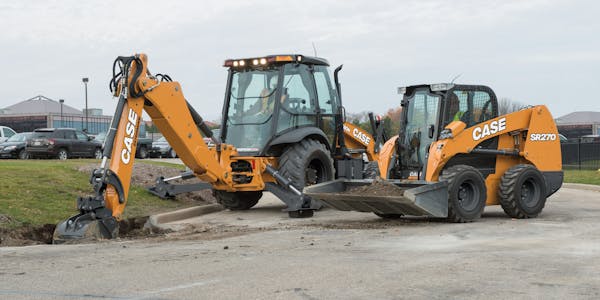




Construction & Landscape Equipment Specialists
what's happening






our products
recent news

Working in Sandy Soil: How to Do It Right Whether you're excavating, hauling materials, or navigating through a site, operating in sandy soil can create issues with traction, trench stability, and various other aspects of earthmoving and construction projects. To help you avoid problems and reduce expensive downtime, we've compiled some crucial tips and recommended practices for efficiently digging and working in sandy environments. Select appropriate CTL and excavator tracks When digging in or moving across sandy terrain, maintaining sufficient traction can be challenging, particularly on slopes. We recommend opting for broad, high flotation CTL or excavator tracks. These wider tracks distribute weight more evenly, lowering ground pressure and minimizing the risk of sinking into soft, sandy ground. Pick suitable skid steer tires For non-tracked equipment like skid steers, both solid and air filled tires can provide adequate traction in sandy soil. Look for skid steer tires with deep tread patterns, as these will deliver the necessary grip to navigate effectively on loose surfaces such as sand, gravel, and similar terrains. Dig with precision and care When excavating sandy soil, it's crucial for operators to prioritize accuracy, caution, and gentleness. Looser soils are prone to disturbance, with cave ins being more likely than in denser soil types. By adopting a slower pace and steadily removing material in smaller increments, you'll improve stability, lower the risk of dangerous collapses, and increase overall project productivity. Utilize the appropriate bucket Selecting the correct type of excavator bucket or skid steer bucket is critical for successfully completing any digging or loading job. For loose, sandy soils, a general purpose excavator bucket or skid steer bucket featuring wide teeth and curved edges is usually the best option. This bucket design will minimize soil disturbance while still allowing efficient digging and movement of large material volumes. Keep your tracks clean Sandy soil can lead to friction and abrasion between components, causing increased wear on CTL and excavator tracks and undercarriages. You should check your machine’s undercarriage throughout the day and use a shovel or pressure washer to clean out built up sand and dirt. Go heavy on lubrication Because of its abrasive nature, sand can be especially harsh on your undercarriage, bucket, bushings, and pins. We advise ensuring all these components are well lubricated by applying grease multiple times throughout the day or approximately every five hours. That way, you’ll help keep sand away from sensitive parts, and any accumulated sand will be forced out when fresh grease is added. Use proper trench protection methods Installing trench protection is very important when working in sandy soil. Sloping and benching techniques, which involve angling the trench wall and creating steps for access, are generally less effective in sandy conditions due to the loose nature of the particles. Instead, we suggest using shoring and trench shields, which utilize metal supports to reinforce trench walls and prevent cave-ins during excavation work. Perform soil testing Soil tests are critical for jobsite and structural safety, especially when dealing with sandy soil. These assessments help on-site experts determine the appropriate benching, shoring, and sloping methods needed to avoid cave ins during excavation. Understanding the physical and chemical composition of your soil allows you to evaluate its weight bearing capacity for excavation and construction work, as well as determine the required level of compaction. If you have any questions about operating on sandy soil, digging in sand, or selecting the right excavator bucket or skid steer bucket, please reach out to our team today!

Tips for Loading Dump Trucks How to Effectively Load Dump Trucks with Your Wheel Loaders How productive you are when loading dump trucks depends heavily on the skill of your wheel loader operator and the actual capabilities of your machines. It is important to optimize the movement of your wheel loaders, so they are not traveling more than necessary or spilling material, both of which waste time and money. To enhance efficiencies and make each cycle more efficient, we've put together several key tips for your wheel loader operator. Implement the correct loading pattern The loading pattern that your wheel loader operator uses plays a large role in how productive and efficient your loading operation will be. We recommend using what’s called the Y or V pattern for loading your dump trucks with wheel loaders. This method involves positioning the dump trucks with their rear just off the edge of the pile. The wheel loader operator begins the cycle at a 45 degree angle relative to the dirt pile and the truck. Moving forward, curving to the right, the operator fills the bucket, then reverses back to the starting position at a 45 degree angle, before moving forward and curving left to dump into the truck. This path resembles a Y or V shape and optimizes the loading cycle. It is key to have your dump trucks maintain a consistent position, so your Y or V pattern is not too big or too small. You need enough space to maneuver the wheel loader effectively, but not so much space that it is traveling more distance than necessary, wasting fuel and time. Select wheel loaders with advanced features Beyond the loading patterns, choosing machines with the appropriate features significantly impacts the productiveness of your wheel loader operator. · Boom kickout sets a predetermined height for the boom when lifting, perfect for when your wheel loader operator is consistently loading a truck at the same height for an extended period of time. · Return to dig ensures the bucket starts each cycle from a predetermined point when lowering, so the bucket starts at the same position for each cycle. · Auto leveling smoothly transitions the wheel loader bucket from a dump or dig position to a carrying position, reducing operator guesswork and minimizing time consuming errors. Match the bucket to your wheel loaders and dump trucks Before beginning a substantial loading project, it is critical to determine the right bucket size for your wheel loader. Consider the dump truck capacity, the number of loads to move daily, and consult your wheel loader operator manual for maximum capacities and tipping loads. Select a bucket that allows you to fill trucks in as few cycles as possible without exceeding the machine's limits. If you have any questions about wheel loader operator tips, filling dump trucks, or wheel loaders in general, contact our team today.

Fleet Management Strategies Heavy Equipment Fleet Management Strategies The larger your grow your fleet, the more critical effective construction equipment management becomes. Properly servicing and maintaining your machines is crucial to ensuring a continued return on investment. A general rule of thumb is to replace equipment once its maintenance costs exceed 30% of the machine’s resale value. To help you keep your investment working productively for as long as possible, we’ve put together some important heavy equipment fleet management strategies that you can follow. Stay ahead of downtime We recommend enrolling your entire heavy equipment fleet into preventive maintenance contracts. It is essential to complete routine service at the intervals suggested by the manufacturer to optimize performance of your equipment and to document maintenance for warranty assurance. Proactive maintenance is a key part of construction equipment management, because it helps stabilize operational costs and lowers expenses by identifying small issues before they turn into big problems. Always follow the 80-20 rule It’s important to remember that about 80% of all maintenance costs are spent on 20% of machine problems. If you can recognize common or repeat issues and take preventive action to fix them, then you can eliminate the things that eat up your operating budget and are the main culprits behind costly downtime. Implement equipment monitoring tools Understanding how your machines are performing is a key part of construction equipment management. There are now innovative, advanced tools that accurately monitor equipment, collect data, and convert raw data into actionable information. Software is available to help fleet managers determine a machine's resale value, calculate ownership and operating costs, and estimate repairs, parts and labor expenses. If you need help understanding these tools, just ask! Conduct routine fluid analysis Regularly completing fluid analysis and comparing contaminant levels to normal wear rates helps identify potential issues with components before a major breakdown occurs. Analyzing fluids is one of the most important heavy equipment fleet management strategies we can share with you, because it gives you a picture of how your machine is working internally and will help you avoid unnecessary downtime and costly repairs. Keep comprehensive records Maintaining tight records of all the machines in your fleet will help you predict equipment productivity and operational costs, including working hours, fuel consumption, maintenance expenses, and more. Consistent, reliable information allows you to make the best decision possible when determining whether to replace or repair a machine. Keep a file for every piece of heavy equipment in your fleet and document all service and repairs. Pay attention to equipment age Generally speaking, the average total cost of owning and operating machines follows a parabolic slope. That means that total cost decreases during the early years of owning the equipment, as capital costs are spread over a longer period of time. However, operating costs increase during the same period, eventually causing an increase in average total cost. The point at which the sum of ownership costs and operating costs is at its minimum is the best age for operating your machines efficiently. One of the most crucial heavy equipment fleet management strategies is to stabilize the average age of all your machines near this point to minimize the total cost of ownership. Should you rebuild or replace a machine? Construction equipment management often involves deciding between rebuilding and replacing a machine. You can use this simple formula to calculate and compare the costs of each choice: Cost to rebuild (new equipment price x .5)/equipment life (estimated hours x .75) = cost per hour For example, a new piece of equipment that is $140,000 with an estimated life of 10,000 hours would cost $14 per hour to operate. To compare, calculate the cost to rebuild. ($140,000)(.5)/(10.000)(.75) = $9.33 per hour If the cost to rebuild is $70,000 for an estimated equipment life of 7,500 hours, at $9.33 per hour, it is more cost effective to rebuild than to replace. If you have any questions about heavy equipment fleet management strategies, contact our team today!